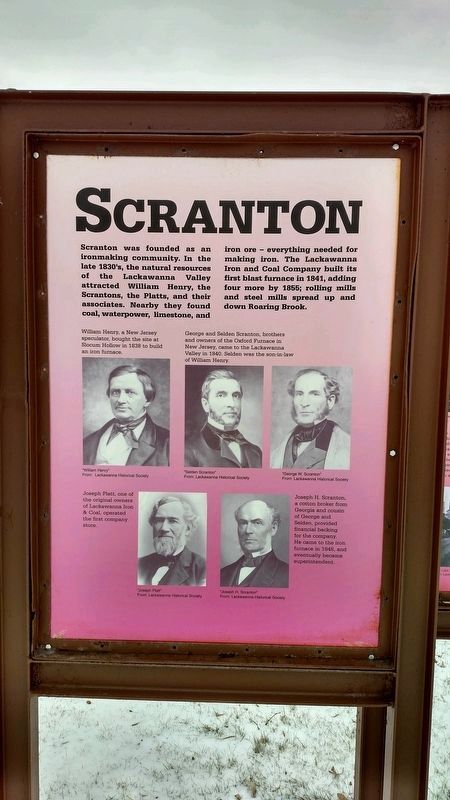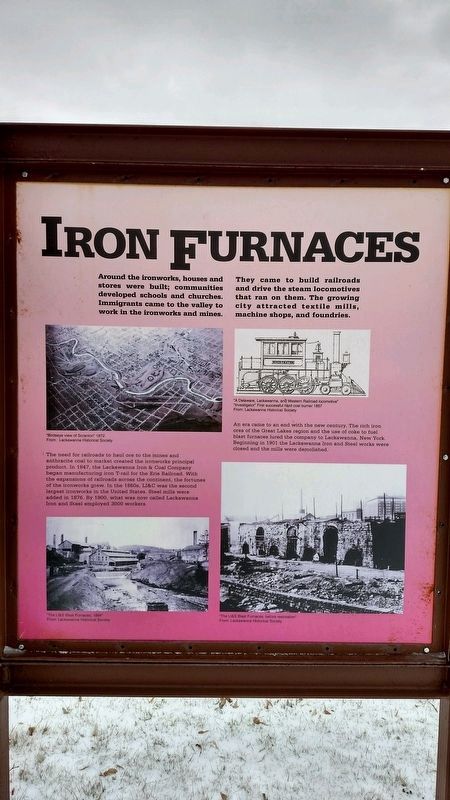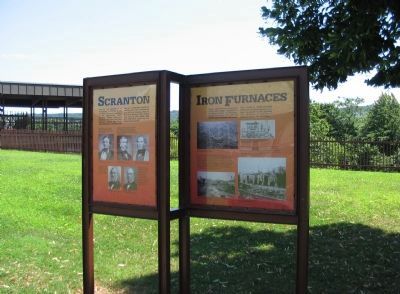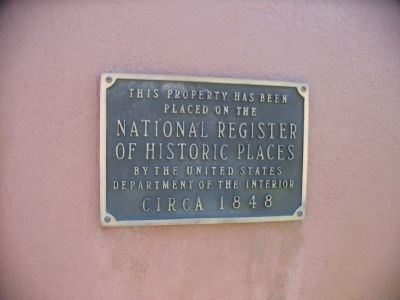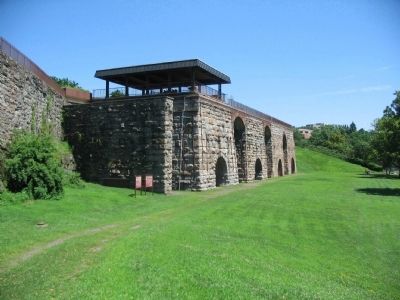Scranton in Lackawanna County, Pennsylvania — The American Northeast (Mid-Atlantic)
Scranton Iron Furnaces
Scranton was founded as an ironmaking community. In the late 1830's, the natural resources of the Lackawanna Valley attracted William Henry, the Scrantons, the Platts, and their associates. Nearby they found coal, waterpower, limestone, and iron ore - everything needed for making iron. The Lackawanna Iron and Coal Company built its first blast furnace in 1841, adding four more by 1855; rolling mills and steel mills spread up and down Roaring Brook.
William Henry, a New Jersey speculator, bought the site at Slocum Hollow in 1838 to build an iron furnace.
George and Selden Scranton, brothers and owners of the Oxford Furnace in New Jersey, came to the Lackawanna Valley in 1840. Selden was the son-in-law of William Henry.
Joseph Platt, one of the original owners of Lackawanna Iron & Coal, operated the first company store.
Joseph H. Scranton, a cotton broker from Georgia and cousin of George and Selden, provided financial backing for the company. He came to the iron furnace in 1848, and eventually became superintendent.
(Right Panel):
Around the ironworks, houses and stores were built; communities developed schools and churches. Immigrants came to the valley to work in the ironworks and mines. They came to build railroads and drive the steam locomotives that ran on them. The growing city attracted textile mills, machine shops, and foundries.
The need for railroads to haul ore to the mines anthracite coal to market created the ironworks principle product. In 1847, the Lackawanna Iron & Coal company began manufacturing iron T-rail for the Erie Railroad. With the expansions of railroads across the continent, the fortunes of the ironworks grew. In the 1860s, LI&C was the second largest ironworks in the United States. Steel mills were added in 1876. By 1900, what was now called Lackawanna Iron and Steel employed 3000 workers.
An era came to an end with the new century. The rich iron ores of the Great Lakes region and the use of coke to fuel blast furnaces lured the company to Lackawanna, New York. Beginning in 1901 the Lackawanna Iron and Steel works were closed and the mills were demolished.
Topics. This historical marker is listed in this topic list: Industry & Commerce. A significant historical year for this entry is 1841.
Location. 41° 24.247′ N, 75° 39.79′ W. Marker is in Scranton, Pennsylvania, in Lackawanna County. Marker is at the intersection of Cedar Avenue and Mattes Avenue, on the right when traveling north on Cedar Avenue. Located at the Scranton Iron Furnace Park. Touch for map. Marker is in this post office area: Scranton PA 18505, United States of America. Touch for directions.
Other nearby markers. At least 8 other markers are within walking distance of this marker. Supplying the Blast (within shouting distance of this marker); Casting Iron (within shouting distance of this marker); Making Steel (within shouting distance of this marker); Rolling and Puddling (within shouting distance of this marker); Settlement (within shouting distance of this marker); The Lackawanna Valley (within shouting distance of this marker); City of Scranton (within shouting distance of this marker); The Blast Furnaces (within shouting distance of this marker). Touch for a list and map of all markers in Scranton.
More about this marker. On the left panel are portraits of William Henry, George Scranton, Selden Scranton, Joseph Scranton, and Joseph Platt. On the right panel are a Birdseye view of Scranton, 1872 from the Lackawanna Historical Society, a drawing of a railroad locomotive used in the 1860s, and photographs of the mills and furnaces.
Also see . . . Lackawanna Iron and Coal Company Furance. National Register documentation. (Submitted on August 20, 2008, by Craig Swain of Leesburg, Virginia.)
Additional commentary.
1. Correction
Selden Scranton was the son-in-law not brother-in-law of William Henry. Selden married William Henry's daughter, Ellen Clarissa Henry in 1839.
William Henry was my 3x great grandfather and Selden Scranton was my 2x great uncle. I have many original documents to back up the relationship of the two men but the information is available in most accounts of the founding of Scranton.
Additionally, I do not think that George and Selden owned the Oxford Furnace. One source "Oxford Furnace" says William Henry had leased the furnace in 1832 and later hired Selden Scranton to oversee it. When Selden left Oxford for "Harrison" as Scranton was then called, at least this account says that he left the Oxford Furnace under the superindance of his younger brother, Charles Scranton though other accounts place Charles in Scranton in the early days of the operation at Harrison. Charles eventually married Jane Ann Henry, another daughter of William Henry in 1847 in Scranton, PA
I believe the date that Joseph H. Scranton entered the busines may be incorrect as well. I think that he began investing in the enterprise as early as 1844 but I am not certain.
You might also want to check the spelling of "cousin"
"Editor's Note: Thank you for bringing these corrections to our attention. Please keep in mind, we are not responsible for the text on the
marker, but we do try to ensure it is correctly transcribed. In this case, it is difficult to read some of the text without a closeup of the marker. However I was able to verify some of your corrections and made the appropriate changes. I regret I could not verify the date Joseph H. Scranton joined the operation.
Concerning ownership of the Oxford Furnace, I cannot read the applicable passage on the marker. Sources may vary, of course, but according to Charles S. Boyer in Early Forges and Furnaces in New Jersey (University of Pennsylvania Press, 1931) it was leased to William Henry in 1931 and sold to George W. and Selden T. Scranton in 1839.
Thank you,
~Kevin
— Submitted July 31, 2010, by Lori Belden Pope of Reedley, California.
Credits. This page was last revised on October 23, 2023. It was originally submitted on August 20, 2008, by Craig Swain of Leesburg, Virginia. This page has been viewed 1,757 times since then and 33 times this year. Photos: 1, 2. submitted on January 18, 2018, by Mike Wintermantel of Pittsburgh, Pennsylvania. 3, 4, 5. submitted on August 20, 2008, by Craig Swain of Leesburg, Virginia.
